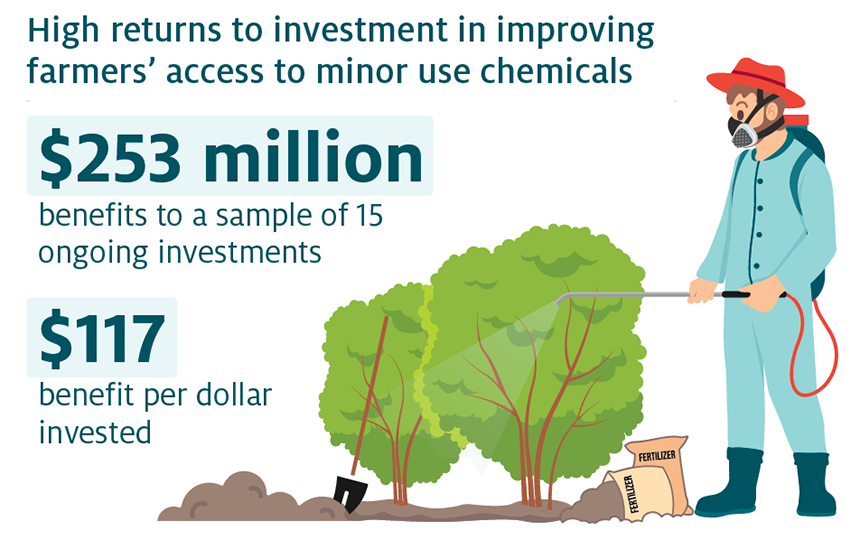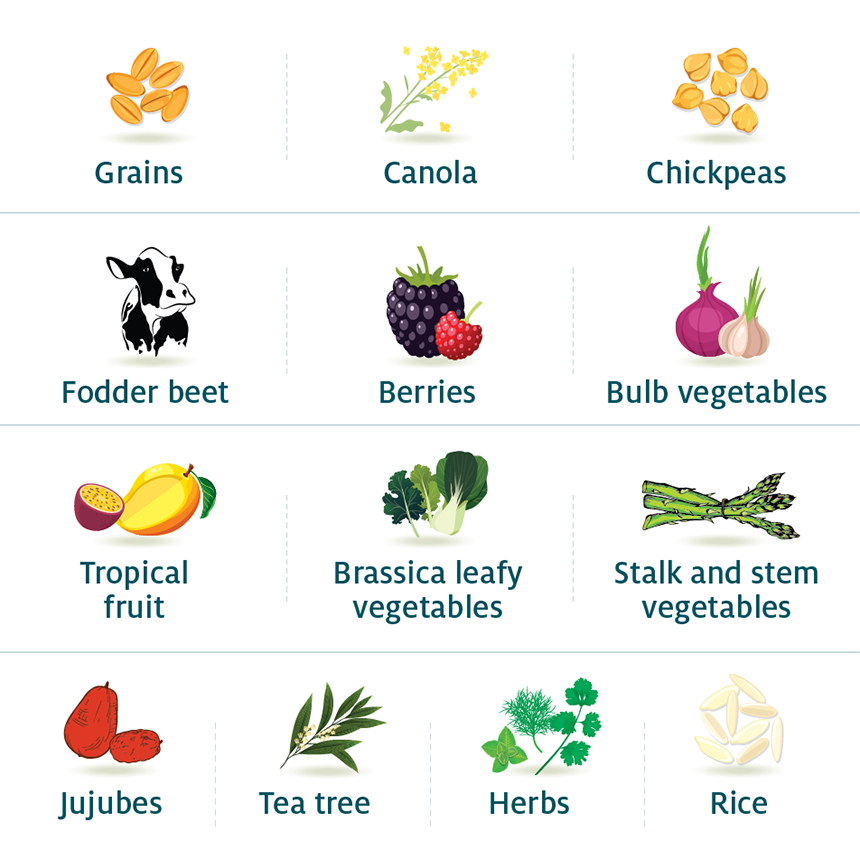Authors: Jenny Eather, Donkor Addai, Ahmed Hafi and Jay Gomboso
Summary

Starting in 2014–15, the Australian Government committed $8.96 million over six years in grants to Rural Research and Development Corporations (RDCs) to invest in improving farmers’ access to minor use chemicals for weed, pest and disease control. These grants were used to conduct field trials and research activities to generate the safety and efficacy data required to apply for chemical registration in Australia.
To shed light on whether the government’s investment in such trials was cost-effective, ABARES estimated the return on investment for 15 of the 149 grants provided. These case-study grants represent a broad cross-section of cereal, horticultural and fodder crops. ABARES focused the analysis on farm level production impacts. Other potential benefits, including to consumers (in terms of increased quality) and to the environment (for example, by allowing farmers to switch to more targeted, rather than broad spectrum chemicals) were not considered.
ABARES estimated that 14 of the 15 case study investments had positive net present values, indicating that the benefits outweighed the costs. Across the case studies, the estimated net present value of benefits (calculated over 20 years, assuming a 10% discount rate) ranged from –$27,000 for the jujubes case study (the only case study with a negative net present value), to $110 million for the aphids in canola case study. The net present value of all 15 case study investments totalled $253 million.
The benefits per dollar invested ranged from less than a dollar to around $360, and the average benefit per dollar invested was $117. The average net present value of benefits for each case study investment was estimated to be $17 million (over 20 years with a 10% discount rate).
These results indicate that the grants program has net benefits. These returns are in line with international studies of similar programs, which also generally found large returns to such investments (Miller and Mann 2017, Office of Audit and Evaluation 2018).
The analysis provides some useful insights for future program design. Estimated private benefits per dollar of investment were very high for some case studies, particularly in larger industries, or where new chemical options are required to avoid resistance to existing chemicals developing. The grant for weed treatment in canola had the largest return per dollar invested ($356) followed by tea tree ($298) and aphid treatment in canola ($298). These results suggest greater industry contribution to grants should be explored.

The estimated private benefits per dollar of investment were generally lower for smaller and emerging industries such as fodder beet and jujubes. Although the increase in yields in response to the use of the chemical input are expected to be substantial (almost 20% for jujubes, for example), the small size of the industries means that the total benefit would be small relative to larger, well established industries. This suggests that current funding arrangements are more likely to be fit for purpose.
Download the full report
Benefits of increased access to minor use chemicals.PDF [1.39 MB]
Benefits of increased access to minor use chemicals.DOCX [1.49 MB]
